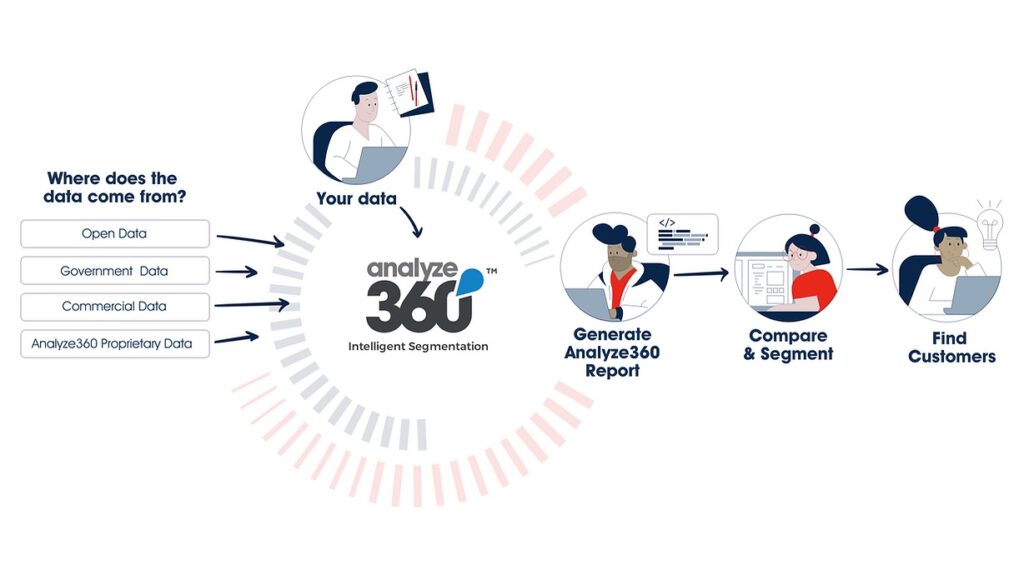For companies that rely on consumer leads to drive growth, the traditional model of paying per list or per use can quickly become expensive and inefficient. Analyze360® changes that by offering unlimited access to leads under a single annual fee and full ownership of those leads—meaning you can reuse them without incurring additional costs.
Here’s how we compare to traditional lead providers:
1. Lead Ownership: Stop Renting Leads and Start Owning Them
Traditional Providers: Many providers offer leads on a rental basis, meaning businesses pay every time they reuse a lead list or contact the same prospects. This leads to spiraling costs and dependency on continuous purchases.
Analyze360® Approach: We provide full ownership of purchased leads, meaning you can reuse them as many times as needed without additional charges. This eliminates ongoing rental fees, allowing for long-term value and savings.
Why It Matters: For companies running high-volume marketing campaigns—such as insurance agencies and personal loan providers—this model enables consistent re-engagement without extra costs, helping businesses scale more efficiently.
2. Unlimited Consumer Leads for a Fixed Annual Fee: Scale Without Limitations
Traditional Providers: Lead providers typically charge per list, with costs ranging between $2,000 and $25,000 per list depending on the quantity and quality of leads. Once a list is exhausted, you have to buy another.
Analyze360® Approach: Our subscription model offers unlimited lead access for a single annual fee. This gives companies flexibility to scale their campaigns without being limited by incremental list purchases.
Why It Matters: For industries like insurance, home services, and mortgage lending, which require daily access to large volumes of leads, this model ensures predictable marketing costs and access to the volume of leads needed to drive growth.
3. Which Industries Are a Best Fit for Analyze360®?
Analyze360® is ideal for small and medium-sized businesses (SMBs) across multiple industries that need large volumes of affordable consumer leads. We have proven success in key verticals, including:
- Insurance & Professional Services: Auto, home, life, and health insurance companies; independent agencies; and online comparison platforms.
- Home Services: HVAC, plumbing, roofing, pest control, and general home improvement companies.
- Mortgage & Real Estate: Mortgage lenders, property management firms, and real estate agents.
- Personal Loans & Credit: Personal loan providers, credit card issuers, and debt consolidation services.
- Health & Wellness: Weight loss programs, fitness coaching, nutritional supplements, and wellness retreats.
- Education & Online Learning: Universities, trade schools, and online course providers.
These industries share a common need: access to high-volume leads with precise targeting and predictable costs.
4. Enriched Consumer Data for Precision Targeting
Traditional Providers: Many lead providers only deliver basic contact details (like names, emails, or phone numbers). Without additional context, businesses are left to guess whether a lead is relevant.
Analyze360® Approach: Our platform provides enriched consumer profiles, combining demographic data, income levels, household structure, and purchasing behaviors. This allows businesses to use attribute-driven segmentation—targeting consumers based on relevant characteristics rather than generic criteria.
Examples of Attributes:
- Household income and spending capacity
- Family size and home ownership status
- Recent purchasing trends and lifestyle indicators
Why It’s Superior: Instead of targeting “all homeowners” or “all email subscribers,” you can focus on specific consumer groups—like homeowners with high spending potential who have recently shown interest in home improvement products. By targeting the right audience, companies reduce wasted outreach and boost conversion rates.
Bonus Impact: Businesses using attribute-driven segmentation often experience higher campaign ROI due to fewer irrelevant contacts and more engaged leads.
5. Privacy Compliance and Ethical Data Practices
Traditional Providers: Many providers operate in gray areas when it comes to data sourcing and privacy, putting businesses at risk of fines or reputation damage.
Analyze360® Approach: We adhere to strict U.S. privacy regulations, including the Fair Credit Reporting Act (FCRA), the Health Insurance Portability and Accountability Act (HIPAA), and California’s CCPA. Our data is sourced ethically, ensuring that businesses remain compliant while maximizing marketing effectiveness.
Why It Matters: Compliance isn’t just about avoiding fines—it’s about building trust. With Analyze360®, you can run effective campaigns while ensuring legal and ethical practices.
The Bottom Line: Scalable, Cost-Effective Lead Generation
Traditional lead providers offer static lists and incremental costs that hinder scalability. Analyze360® offers a smarter alternative with:
- Lead ownership and no recurring rental fees
- Unlimited access to leads under a single annual fee
- Enriched consumer profiles for precise targeting
- Privacy compliance to ensure legal and ethical marketing
For businesses buying consumer leads in bulk, this approach offers scalable growth, predictable marketing costs, and better campaign outcomes.
Ready to experience the difference? Contact us today to see how Analyze360® can help you transform your lead acquisition strategy.
